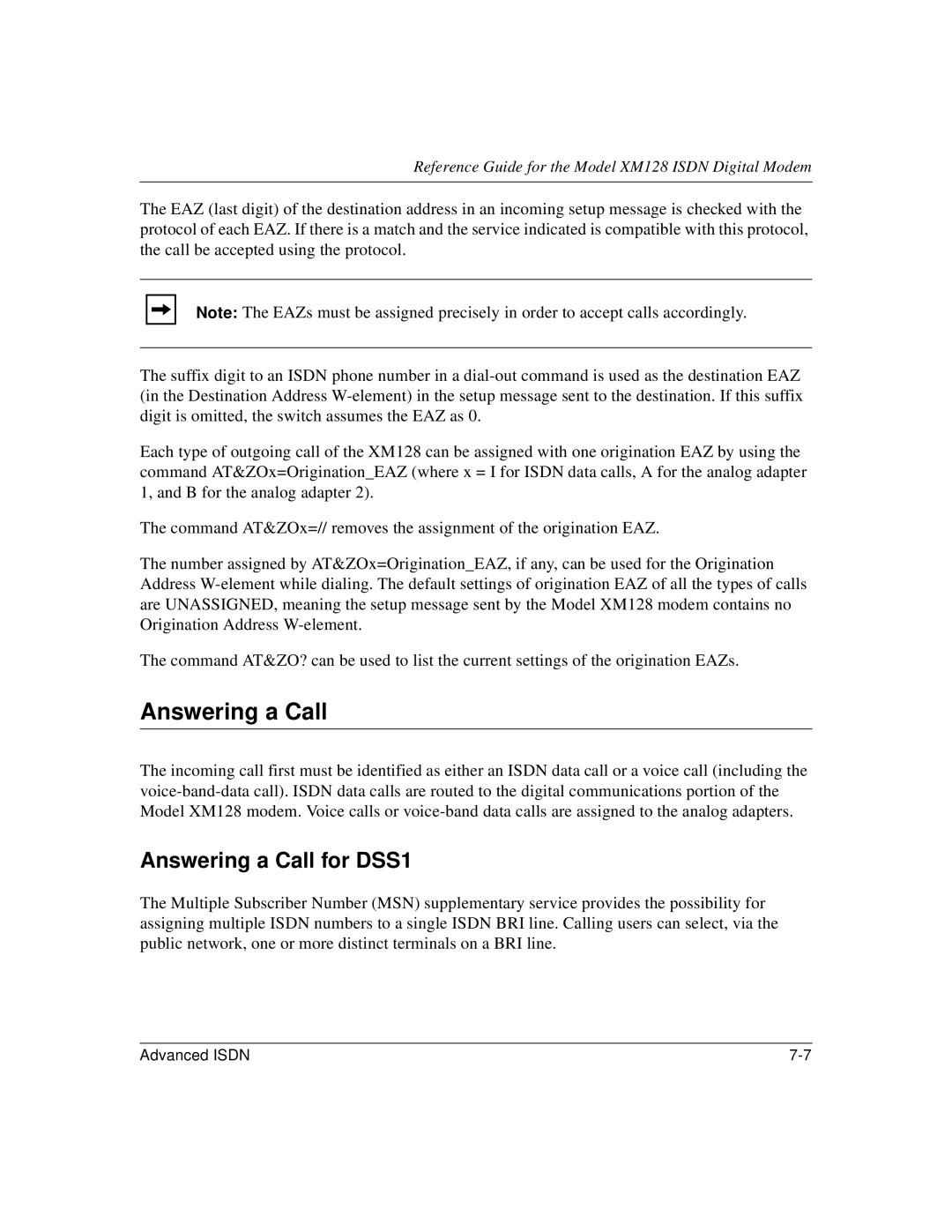
Reference Guide for the Model XM128 ISDN Digital Modem
The EAZ (last digit) of the destination address in an incoming setup message is checked with the protocol of each EAZ. If there is a match and the service indicated is compatible with this protocol, the call be accepted using the protocol.
Note: The EAZs must be assigned precisely in order to accept calls accordingly.
The suffix digit to an ISDN phone number in a
Each type of outgoing call of the XM128 can be assigned with one origination EAZ by using the command AT&ZOx=Origination_EAZ (where x = I for ISDN data calls, A for the analog adapter 1, and B for the analog adapter 2).
The command AT&ZOx=// removes the assignment of the origination EAZ.
The number assigned by AT&ZOx=Origination_EAZ, if any, can be used for the Origination Address
The command AT&ZO? can be used to list the current settings of the origination EAZs.
Answering a Call
The incoming call first must be identified as either an ISDN data call or a voice call (including the
Answering a Call for DSS1
The Multiple Subscriber Number (MSN) supplementary service provides the possibility for assigning multiple ISDN numbers to a single ISDN BRI line. Calling users can select, via the public network, one or more distinct terminals on a BRI line.
Advanced ISDN |
